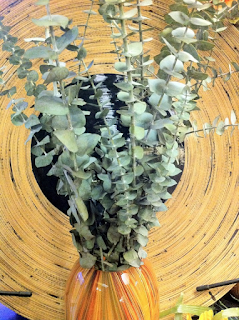 As part of our 125th
Anniversary celebration at Stein Your Florist Co. we are sharing a year of
floral education, November 1, 2012 thru October 31, 2013. Each day we will post
something new on our Facebook page to share our knowledge of our favorite things,
flowers and plants and we'll be updating our blog every 5 days or so. No need
for pencils and notebooks, just sharing some simple lessons in floristry.
As part of our 125th
Anniversary celebration at Stein Your Florist Co. we are sharing a year of
floral education, November 1, 2012 thru October 31, 2013. Each day we will post
something new on our Facebook page to share our knowledge of our favorite things,
flowers and plants and we'll be updating our blog every 5 days or so. No need
for pencils and notebooks, just sharing some simple lessons in floristry.
Day 116 - The
flower symbolism associated with the daisy is purity, innocence, loyal love,
beauty, patience and simplicity. Daisies are often depicted in meadows in
Medieval paintings, also known as a "flowery mead." Daisies are
believed to be more than 4,000 years old and hairpins decorated with daisies
were found during the excavation of the Minoan Palace on the Island of Crete.
Even further back, Egyptian ceramics were decorated with daisies.
Day 117 - The
Emerald palm is a broad leaf pinnate arrangement plant with fronds 1 inch wide
and tapered at the ends. The inflorescences have a slightly bitter taste, and
are considered a delicacy in El Salvador and Guatemala. They are usually eaten
in salads, or covered in egg batter and fried. The latter dish is called
"rellenos de pacaya", and is often served with tomato sauce, like
chiles rellenos. We tend to use them around the flower shop for strictly
ornamental purposes.
 Day
118 - Acacia is the largest genus of vascular plants in the plant kingdom. The
name Acacia is derived from the Greek word akis meaning a point or barb. About
1350 species of Acacia are found throughout the world. Acacia makes an
excellent garden plant, it looks beautiful and provides a natural home security
system when planted under windows, as it is rather thorny. Acacia Flowers are
typically small, yellow and fragrant with many stamens, giving the flower a
fuzzy appearance. The Acacia flower heads are actually lots of little flowers
bundled together.
Day
118 - Acacia is the largest genus of vascular plants in the plant kingdom. The
name Acacia is derived from the Greek word akis meaning a point or barb. About
1350 species of Acacia are found throughout the world. Acacia makes an
excellent garden plant, it looks beautiful and provides a natural home security
system when planted under windows, as it is rather thorny. Acacia Flowers are
typically small, yellow and fragrant with many stamens, giving the flower a
fuzzy appearance. The Acacia flower heads are actually lots of little flowers
bundled together.
Day 119 - Limonium is a genus of 120 flower species. They are
found growing wild on the seacoasts and salt marshes and are widely distributed
over the Northern Hemisphere. The flowers of many kinds are in loose panicles
and others in branching spikes. They are winged spikelets, dry and papery. They
may be blue lavender, orange, yellow, apricot, peach, pink or rose-red; many
times they are bicolored. They are often used for drying, being cut just before
they fully open and hung in a cool room to dry. Once cut, if exposed to even
low levels of heat and humidity the flowers will develop an unpleasant odor.
Limonium is said to bring success and good luck.
 Day
120 - Acacias are mostly insect pollinated; however, acacia flowers do not
produce any nectar. The leaf and phyllode glands secrete a nectar or sugary
substance which attracts ants, bees, butterflies and other insects. All parts
of the Acacia plant - flowers, leaves and phyllodes, legumes and seeds, stems,
trunk and roots are all utilized by hordes of animals. We humans often use
acacia seeds for food and a variety of other products. The seeds of Acacia
niopo, for instance, are roasted and used as snuff in South America.
Additionally, the wood of the acacia plant is renowned for its excellent fuel
properties and can also produce good charcoal.
Day
120 - Acacias are mostly insect pollinated; however, acacia flowers do not
produce any nectar. The leaf and phyllode glands secrete a nectar or sugary
substance which attracts ants, bees, butterflies and other insects. All parts
of the Acacia plant - flowers, leaves and phyllodes, legumes and seeds, stems,
trunk and roots are all utilized by hordes of animals. We humans often use
acacia seeds for food and a variety of other products. The seeds of Acacia
niopo, for instance, are roasted and used as snuff in South America.
Additionally, the wood of the acacia plant is renowned for its excellent fuel
properties and can also produce good charcoal.






























